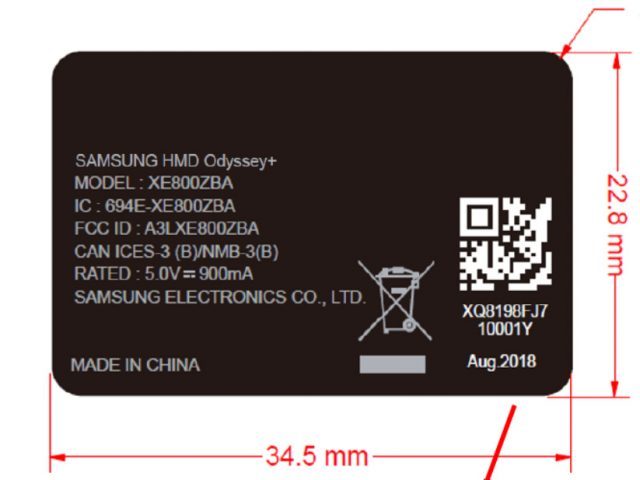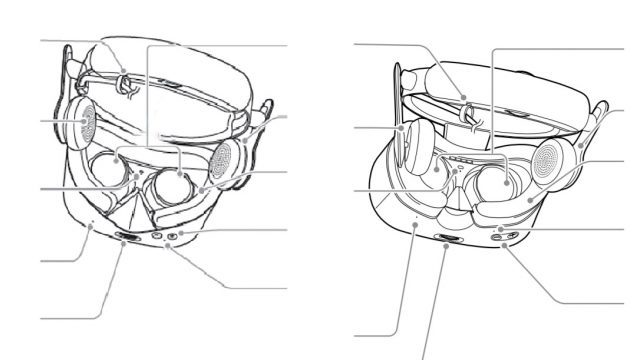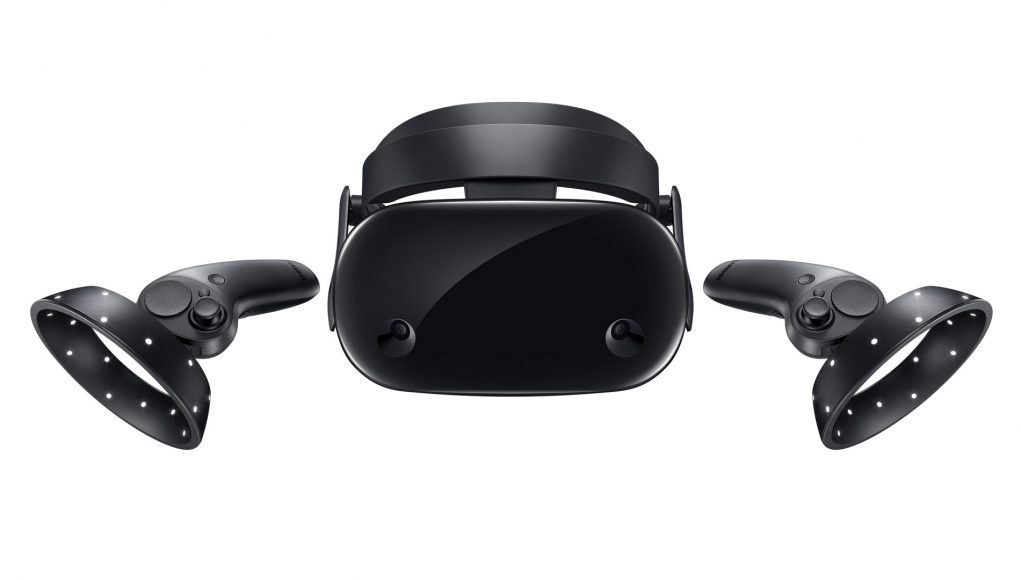Samsung appears to be developing a followup to its Odyssey VR headset which launched late last year. A ‘Samsung HMD Odyssey+’ sporting a new model number has appeared in FCC documentation, suggesting that the device is nearing a launch-ready state.
While Samsung has had a strong presence in the mobile VR space for many years thanks to its Gear VR headset, the company launched its first PC VR headset, the HMD Odyssey, back in November of 2017 as part of Microsoft’s Windows VR platform.
Now an improved version of the headset appears to be in the works. FCC documentation filed by Samsung reveals a headset called the HMD Odyssey+, sporting model number XE800ZBA (the original Odyssey is XE800ZAA).

The U.S. Federal Communications Commission is tasked with certifying products with electromagnetic emissions to be safe and compatible with regulations. Products utilizing radio, WiFi, infrared, etc. need certification before they can be distributed for sale. Certification by the FCC marks one step closer to the launch of consumer electronics product.
Specifications found in the Odyssey+ documentation, which may not be final, don’t show any obvious major changes from the original model, with the Odyssey+ apparently featuring the same 1,440 × 1,600 resolution per eye and 110 degree field of view. However the display is indicated as ‘AMOLED+SFS’; it isn’t clear what SFS stands for in this case, and we haven’t seen that acronym used regarding the original headset. One guess is that it could be related to the ‘Anti SDE’ technology that Samsung has been working on.
The specs also mention ‘Wider Eye box, Wider Part of Nose, Anti-fog’, which may be the crux of the Odyssey+’s improvements, suggesting lenses with a larger ‘sweet spot’, a more comfortable nose opening, and features to reduce lens fogging. Indeed, a comparison of an image from the Odyssey+ documentation and the original Odyssey appears to show some differences in the headset’s nose area:

Interestingly, the Odyssey+ specs note platform support as ‘Windows MR / Steam VR’, while official specs of the original Odyssey don’t mention SteamVR at all. It’s most likely that this is simply a reference to the official Windows Mixed Reality plugin for SteamVR, which makes Windows VR headsets compatible with many SteamVR titles, but there’s a small chance that the Odyssey+ could offer native SteamVR compatibility out of the box.
Aside from the publicly available documentation, Samsung, like many companies, has submitted a Confidentiality Request to keep the following FCC documents out of the public eye:
- External photos
- Internal photos
- Test set-up photos
- User manual
The original Odyssey headset has been critiqued for its hit-or-miss ergonomics, and it’s possible that there are changes to the fit and form of the Odyssey+ that aren’t reflected in the specs. We’ll have to wait and see. We’ve have reached out to Samsung for comment concerning the yet to be revealed headset.







